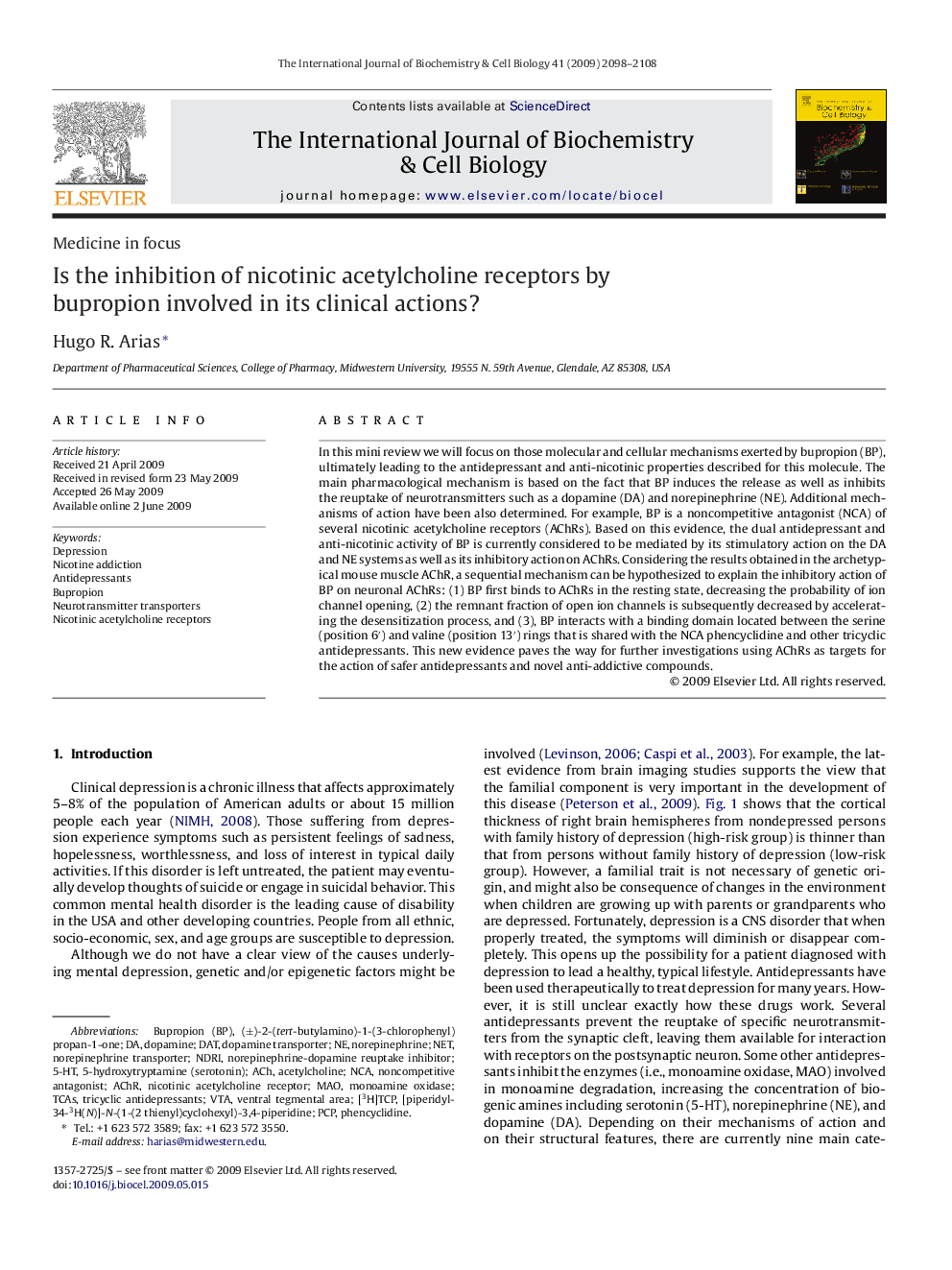| کد مقاله | کد نشریه | سال انتشار | مقاله انگلیسی | نسخه تمام متن |
|---|---|---|---|---|
| 8325559 | 1539948 | 2009 | 11 صفحه PDF | دانلود رایگان |
عنوان انگلیسی مقاله ISI
Is the inhibition of nicotinic acetylcholine receptors by bupropion involved in its clinical actions?
دانلود مقاله + سفارش ترجمه
دانلود مقاله ISI انگلیسی
رایگان برای ایرانیان
کلمات کلیدی
MAO[3H]TCPNDRINCAnorepinephrine transporterTCAs5-HTVTAAChRPCPDAT5-hydroxytryptamine (serotonin) - 5-hydroxytryptamine (سروتونین)Noncompetitive antagonist - آنتاگونیست غیر رقابتیACh - آهAcetylcholine - استیل کولینnicotine addiction - اعتیاد به نیکوتینDepression - افسردگیDopamine transporter - انتقال دهنده دوپامینNeurotransmitter transporters - انتقال دهنده های عصبی انتقال دهندهBupropion - بوپروپیونNET - خالصAntidepressants - داروهای ضد افسردگیtricyclic antidepressants - داروهای ضد افسردگی سه حلقه ایDopamine - دوپامینPhencyclidine - فن سیکلیدین، گرد فرشتهmonoamine oxidase - مونوآمین اکسیدازها ventral tegmental area - ناحیه تگمنتوم شکمیnorepinephrine - نوراپی نفرینnicotinic acetylcholine receptor - گیرنده استیلکولین نیکوتینnicotinic acetylcholine receptors - گیرنده های استیل کولین نیکوتین
موضوعات مرتبط
علوم زیستی و بیوفناوری
بیوشیمی، ژنتیک و زیست شناسی مولکولی
زیست شیمی
پیش نمایش صفحه اول مقاله

چکیده انگلیسی
In this mini review we will focus on those molecular and cellular mechanisms exerted by bupropion (BP), ultimately leading to the antidepressant and anti-nicotinic properties described for this molecule. The main pharmacological mechanism is based on the fact that BP induces the release as well as inhibits the reuptake of neurotransmitters such as a dopamine (DA) and norepinephrine (NE). Additional mechanisms of action have been also determined. For example, BP is a noncompetitive antagonist (NCA) of several nicotinic acetylcholine receptors (AChRs). Based on this evidence, the dual antidepressant and anti-nicotinic activity of BP is currently considered to be mediated by its stimulatory action on the DA and NE systems as well as its inhibitory action on AChRs. Considering the results obtained in the archetypical mouse muscle AChR, a sequential mechanism can be hypothesized to explain the inhibitory action of BP on neuronal AChRs: (1) BP first binds to AChRs in the resting state, decreasing the probability of ion channel opening, (2) the remnant fraction of open ion channels is subsequently decreased by accelerating the desensitization process, and (3), BP interacts with a binding domain located between the serine (position 6â²) and valine (position 13â²) rings that is shared with the NCA phencyclidine and other tricyclic antidepressants. This new evidence paves the way for further investigations using AChRs as targets for the action of safer antidepressants and novel anti-addictive compounds.
ناشر
Database: Elsevier - ScienceDirect (ساینس دایرکت)
Journal: The International Journal of Biochemistry & Cell Biology - Volume 41, Issue 11, November 2009, Pages 2098-2108
Journal: The International Journal of Biochemistry & Cell Biology - Volume 41, Issue 11, November 2009, Pages 2098-2108
نویسندگان
Hugo R. Arias,